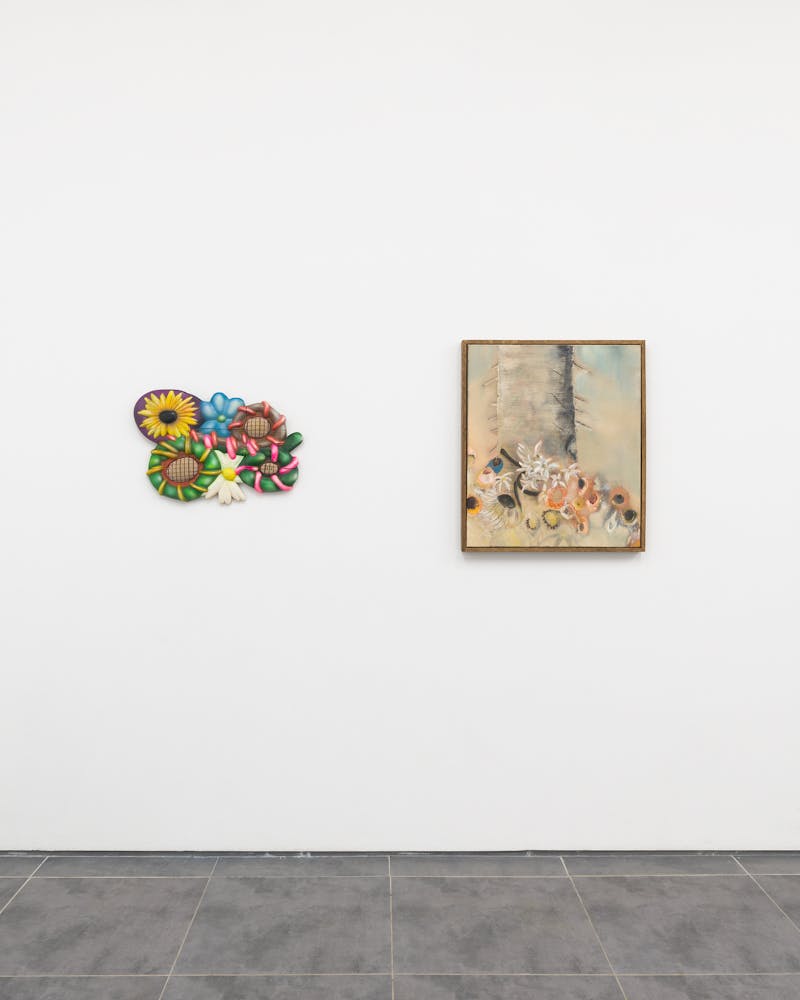Death, in bloom is the result of a chance conversation: Diane and James are friends and studio allies. They engage in vigorously contemplative art gossip. Last spring, as the first lockdown took hold, they were sharing ideas, niggles and frustrations, both pessimistic about their immediate future.
As conversation yo-yoed, talk of the infamous paintings depicting an arrow-punctured Saint Sebastian tied to a tree sparked a synchronised response. By coincidence, Diane was researching 16th century versions by Bernadino Luini and Francesco Ubertini Bacchiacca, transposing them into drawings from her imagination, while James was pasting printouts of a bustling 15th century rendition by Pietro Perugino on his wall.
For Diane, a painter, the lonely wilting lilies at the foot of Perugino’s painting – pungent blooms used by the poor to treat the plague – piqued an interest in reimagining the scene overgrown by nature several centuries on. As a sculptor, James was drawn to the formal impact of the arrows lodged in Sebastian’s body. The hard darts piercing his soft skin and the twisted cloth reminded James of the rods and coils that feature in his drawings and sculptures.
Saint Sebastian, martyred after being tied to a tree under a hail of Roman arrows, is the Christian saint of pestilence, revered as the peoples’ protector during many medieval plagues. Amid our own pandemic, his story added to the mixing pot of ideas Diane and James had been stirring. It was now ready to bring to a boil…
Over the past year, their sculptures and paintings have been worked on, put away, reworked and pondered upon during the many lockdowns. You’ll notice references to Saint Sebastian throughout – Diane’s bountiful floral paintings surrounding the Saint in the guise of a jagged tree trunk, or James's flower-topped arrows perforating abdomens.
Flowers are often given to celebrate the birth of a newborn, or console after the death of a loved one. Here, whether painted or sculpted, they represent resurrection and afterlife, hope and solace.
As you look Diane and James’ work, those conversations and contemplations they’ve had can also live anew.

(Left) James Jessiman, Everything Trying to Live Forever, 2021 (Right) Diane Chappalley, Saint Sebastien, the Lillies and the Snake, 2020